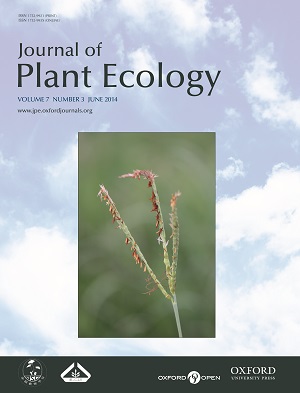Current Issue
-
 Volume 7 Issue 3
Volume 7 Issue 3
Andropogon gerardii is a long-lived grass that is dominant in central US mesic grasslands but has a widespread distribution. As climate changes, this and other broadly distributed dominant grasses will face environmental change where they are currently dominant as well as where they are now rare. A paper in this issue by Giuliani et al. examines how different populations of two dominant grasses vary in their responses to climate change. Photo taken by Amanda Giuliani.
IF: 3.9
CiteScore: 5.7
CiteScore: 5.7
Editors-in-Chief
Yuanhe Yang
Bernhard Schmid
Yuanhe Yang
Bernhard Schmid
CN 10-1172/Q
ISSN 1752-9921(print)
ISSN 1752-993X(online)
ISSN 1752-9921(print)
ISSN 1752-993X(online)







